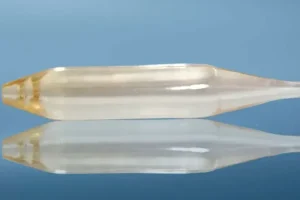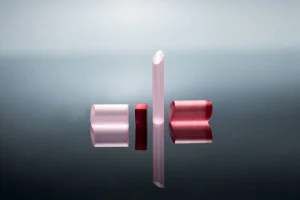Chapter 1: Introduction to LiNbO3 and its Properties
LiNbO3 is a ferroelectric material with a perovskite crystal structure, which exhibits a sizeable electro-optic effect. The electro-optic development refers to the change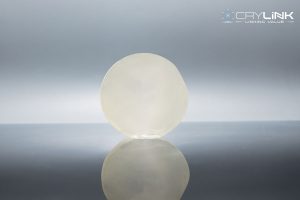 in the refractive index of a material in response to an applied electric field. LiNbO3 has a high electro-optic coefficient of approximately 30 pm/V, one of the highest known materials. This property makes LiNbO3 an excellent choice for fabricating electro-optic modulators, switches, and other photonic devices.
in the refractive index of a material in response to an applied electric field. LiNbO3 has a high electro-optic coefficient of approximately 30 pm/V, one of the highest known materials. This property makes LiNbO3 an excellent choice for fabricating electro-optic modulators, switches, and other photonic devices.
LiNbO3 also exhibits a strong nonlinear optical response, which refers to the property of a material to change its refractive index in response to an intense visual field. This property makes LiNbO3 suitable for frequency conversion, second-harmonic generation, and parametric amplification applications.
Another advantage of LiNbO3 is its high optical damage threshold, which refers to the maximum light intensity that a material can withstand without damage. LiNbO3 has a high visual damage threshold of approximately 1 GW/cm2, which makes it suitable for high-power applications.
LiNbO3 is also thermally stable and has a low thermal expansion coefficient, making it less susceptible to thermal stress. This property is significant for applications that require high stability and accuracy, such as sensors and actuators.
In summary, LiNbO3 is a versatile material with unique properties that make it suitable for various photonic applications. Its high electro-optic and nonlinear coefficients, high optical damage threshold, and thermal stability make it a popular choice for fabricating different photonic devices. In the following chapters, we will discuss the applications of LiNbO3 in more detail.
Chapter 2: LiNbO3-based waveguides and modulators
LiNbO3-based waveguides and modulators are essential 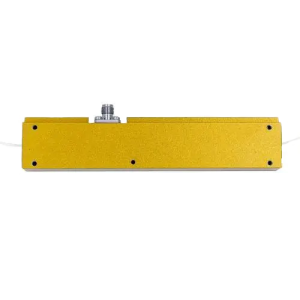 components in many photonic devices. Waveguides are structures that guide light along a particular path and are necessary for light propagation in optical circuits. LiNbO3 waveguides can be fabricated using techniques such as proton exchange, Ti diffusion, and ion implantation. These techniques can create waveguides with different profiles and characteristics, such as channel waveguides and ridge waveguides.
components in many photonic devices. Waveguides are structures that guide light along a particular path and are necessary for light propagation in optical circuits. LiNbO3 waveguides can be fabricated using techniques such as proton exchange, Ti diffusion, and ion implantation. These techniques can create waveguides with different profiles and characteristics, such as channel waveguides and ridge waveguides.
LiNbO3 modulators are devices that can modulate the intensity or phase of an optical signal by changing the refractive index of the waveguide using an applied electric field. LiNbO3 modulators can be classified into amplitude modulators and phase modulators. Amplitude modulators change the intensity of the optical signal by modulating the coupling between the waveguide and the visual mode. Phase modulators change the phase of the optical signal by introducing a phase shift in the optical path.
LiNbO3 modulators have several advantages over other types of modulators. They have a high modulation depth, high bandwidth, and low drive voltage, which makes them suitable for high-speed and low-power applications. They also have a wide range of operation wavelengths, making them compatible with different optical fibers and sources.
Chapter 3: LiNbO3-based Sensors and Actuators
LiNbO3-based sensors and actuators are used in various applications, such as telecommunications, aerospace, and biomedical engineering. Sensors can detect and measure physical, chemical, or biological parameters, such as temperature, pressure, strain, and pH. Actuators can convert electrical, mechanical, or thermal energy into motion or force.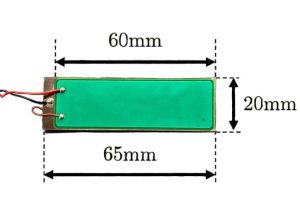
LiNbO3-based sensors and actuators can be fabricated using techniques such as ion implantation, photolithography, and laser micromachining. These techniques can create sensors and actuators with different geometries and properties, such as microcantilevers, microresonators, and microactuators.
LiNbO3-based sensors and actuators have several advantages over other sensors and actuators. They have a high sensitivity, high resolution, and fast response time, which makes them suitable for high-precision and high-speed applications. They also have a wide range of operating temperatures, which makes them ideal for harsh environments.
Chapter 4: LiNbO3 in nonlinear optics and frequency conversion
LiNbO3 has a strong nonlinear optical response, which makes it suitable for applications such as frequency conversion, second-harmonic generation, and parametric amplification. Nonlinear optics refers to the property of a material to change its refractive index in response to an intense optical field. Frequency conversion refers to changing the frequency of an optical signal.
LiNbO3 can be used to generate second-harmonic light, which refers to the process of converting a fundamental frequency into a harmonic frequency. This process can generate coherent light at wavelengths that are difficult to obtain using conventional sources.
LiNbO3 can also be used for parametric amplification, which refers to amplifying an optical signal by transferring its energy to a pump signal. This process can amplify weak signals and increase the sensitivity of optical detectors.
Chapter 5: LiNbO3-based optical switches
LiNbO3-based optical switches are devices that can switch the path of an optical signal by changing the refractive index of a waveguide using an applied electric field. Optical switches are essential components in optical networks, which route signals between different paths.
LiNbO3-based optical switches can be classified into two types: electro-optic switches and thermo-optic switches. Electro-optic buttons change the refractive index of a waveguide by applying an electric field. In contrast, thermo-optic controls change the refractive index of a waveguide by heating it.
LiNbO3-based electro-optic switches have several advantages over other types of controls. They have a high switching speed, low insertion loss, and low power consumption, which makes them suitable for high-speed and low-power applications. They also have a wide range of operating wavelengths, making them compatible with different optical fibers and sources.
Chapter 6: LiNbO3-based photonic integrated circuits
LiNbO3-based photonic integrated circuits (PICs) integrate photonic components on a single chip, such as waveguides, modulators, and detectors. PICs are essential for the development of high-performance and compact photonic systems.
LiNbO3-based PICs can be fabricated using techniques such as ion implantation, Ti diffusion, and photolithography. These techniques can create complex photonic circuits with high integration density and low loss.
LiNbO3-based PICs have several advantages over other types of PICs. They have a high electro-optic coefficient, allowing efficient modulation and switching. They also have a wide range of operating wavelengths and a low propagation loss, which makes them suitable for high-speed and low-loss applications.
Chapter 7: LiNbO3 in quantum photonics
LiNbO3 is a promising material for applications in quantum photonics, which studies the quantum properties of light and its interaction with matter. Quantum photonics has potential applications in quantum communication, quantum computing, and quantum sensing.
LiNbO3 can be used to generate entangled photons, which are pairs of photons that are correlated in such a way that the measurement of one photon can instantaneously determine the state of the other photon, regardless of the distance between them. This property can be used for secure communication and quantum computing.
LiNbO3 can also be used for quantum sensing, which refers to using quantum properties of light for high-precision measurements. LiNbO3-based sensors can measure physical and chemical parameters with high sensitivity and accuracy.
Chapter 8: Future Prospects and challenges of LiNbO3 in Photonics
The prospects of LiNbO3 in photonics are promising as the demand for high-performance and low-power photonic devices continues to increase. LiNbO3-based devices have the potential to revolutionize the field of photonics by enabling high-speed and low-power applications in various areas, such as telecommunications, sensing, and quantum photonics.
One of the most promising areas for the application of LiNbO3-based 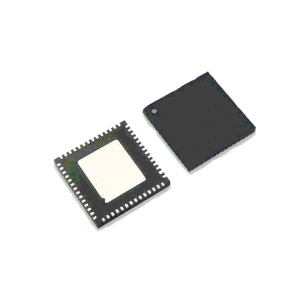 devices is in the development of photonic integrated circuits (PICs). LiNbO3-based PICs have the potential to integrate different photonic components on a single chip, such as waveguides, modulators, and detectors, which can enable compact and high-performance photonic systems.
devices is in the development of photonic integrated circuits (PICs). LiNbO3-based PICs have the potential to integrate different photonic components on a single chip, such as waveguides, modulators, and detectors, which can enable compact and high-performance photonic systems.
Another promising area is using LiNbO3 in quantum photonics, where its unique properties, such as high electro-optic and nonlinear coefficients, can generate entangled photons and enable high-precision quantum sensing.
However, several challenges need to be addressed in developing LiNbO3-based devices. One of the challenges is the integration of different components on a single chip, which requires developing new fabrication techniques and materials. Another challenge is the optimization of the device performance, such as the reduction of the insertion loss and the improvement of the modulation efficiency.
In addition, developing LiNbO3-based devices also requires a deep understanding of the material properties and their impact on device performance. This requires developing new theoretical and experimental tools for the characterization of LiNbO3 and the optimization of its properties.
In summary, LiNbO3-based devices have the potential to enable high-performance and low-power photonic applications in various areas, such as telecommunications, sensing, and quantum photonics. However, the development of LiNbO3-based devices also requires the resolution of several challenges, such as the integration of different components on a single chip and the optimization of device performance. The future of LiNbO3 in photonics is promising but requires continued research and development efforts.



